How does energy move in ecosystems?
When you see a picture of an ecosystem , it often looks quiet and peaceful. However, ecosystems are actually full of movement. Birds squawk and beat their wings, plants sway in the breeze, and insects buzz.
Each movement made by a living thing requires energy. All of life’s functions, including growth and reproduction, require energy. The main source of energy for most life on Earth is the Sun. Unlike other resources, such as water and carbon, energy does not cycle through ecosystems. Instead, energy flows in one direction, as shown in Figure 1. In most cases, energy flow begins with the Sun, and moves from one organism to another. Many organisms get energy by eating other organisms.
Sometimes organisms change energy into different forms as it moves through an ecosystem. Not all the energy an organism gets is used for life processes. Some is released to the environment as thermal energy. You might have read that energy cannot be created or destroyed, but it can change form. This idea is called the law of conservation of energy.
1. Key Concept Check How do the movements of matter and energy differ?
Producers
People who make things or products are often called producers. In a similar way, living things that make their own food are called producers. Producers make their food from materials found in their environments. Most producers are photosynthetic (foh toh sihn THEH tihk). They use the process of photosynthesis (foh toh SIHN thuh sus), which is described below. Grasses, trees, and other plants, algae and some other protists, and certain bacteria are photosynthetic. Other producers, including some bacteria, are chemosynthetic (kee moh sihn THEH tihk). They make their food using chemosynthesis (kee moh SIHN thuh sus).
Photosynthesis Recall that in the carbon cycle, carbon in the atmosphere cycles through producers such as plants, into other organisms, and then back into the atmosphere. This and other matter cycles involve photosynthesis, as shown in Figure 2. Photosynthesis is a series of chemical reactions that convert light energy, water, and carbon dioxide into the food-energy molecule glucose and give off oxygen.
Chemosynthesis As you read earlier, some producers make food using chemosynthesis. Chemosynthesis is the process during which producers use chemical energy in matter rather than light energy and make food. One place where chemosynthesis can occur is on the deep ocean floor. There, inorganic compounds that contain hydrogen and sulfur, along with thermal energy from Earth’s interior, flow out from cracks in the ocean floor. These cracks are called hydrothermal vents. These vents, such as the one shown in Figure 3, are home to chemosynthetic bacteria. These bacteria use the chemical energy contained in inorganic compounds in the hot water and produce food.
2.  Reading Check What materials do producers use to make food during chemosynthesis?
Reading Check What materials do producers use to make food during chemosynthesis?
 Reading Check What materials do producers use to make food during chemosynthesis?
Reading Check What materials do producers use to make food during chemosynthesis?
Consumers
Some consumers are shown in Figure 4. Consumers do not produce their own energy-rich food, as producers do. Instead, they get the energy they need to survive by consuming other organisms.
Consumers can be classified by the type of food that they eat. Herbivores feed on only producers. For example, a deer is an herbivore because it eats only plants. Carnivores eat other animals. They are usually predators, such as lions and wolves. Omnivores eat both producers and other consumers. A bird that eats berries and insects is an omnivore.
Another group of consumers is detritivores (dih TRI tuh vorz). They get their energy by eating the remains of other organisms. Some detritivores, such as insects, eat dead organisms. Other detritivores, such as bacteria and mushrooms, feed on dead organisms and help decompose them. For this reason, these organisms often are called decomposers. During decomposition, decomposers produce carbon dioxide that enters the atmosphere. Some of the decayed matter enters the soil. In this way, detritivores help recycle nutrients through ecosystems. They also help keep ecosystems clean. Without decomposers, dead organisms would pile up in an ecosystem.
Figure 4 Organisms can be classified by the type of food that they eat.
1
WORD ORIGIN
photosynthesis
from Greek photo, meaning “light”; and synthese, meaning “synthesis”
from Greek photo, meaning “light”; and synthese, meaning “synthesis”
2
Most organisms get their energy from the Sun or by consuming other organisms. In this lab, you will use photographs to classify organisms based on their feeding relationships.
1. Search through a magazine for photographs of ecosystems. Select a photograph that shows several
different organisms.
different organisms.
2. In your Science Journal, identify the organisms. Include a description of their environment.
3. Describe how the organisms are interacting with one another and with their environment.
Analyze and Conclude
1. Classify the organisms as producers or consumers. Use details from the photograph to support
your classification scheme.
your classification scheme.
2. Key Concept How do the producers in your photo obtain energy? How do the consumers get
their energy?
their energy?
Unlike matter, energy does not cycle through ecosystems because it does not return to the Sun. Instead, energy flows through ecosystems. Organisms use some energy for life processes. In addition, organisms store some energy in their bodies as chemical energy. When consumers eat these organisms, this chemical energy moves into the bodies of consumers. However, with each transfer of energy from organism to organism, some energy changes to thermal energy. The bodies of consumers emit excess thermal energy, which then enters the environment. Scientists use models to study this flow of energy through an ecosystem. They use different models depending on how many organisms they are studying.
Food Chains
A food chain is a model that shows how energy flows in an ecosystem through feeding relationships. In a food chain, arrows show the transfer of energy. A typical food chain is shown in Figure 5. Notice that there are not many links in this food chain. That is because the amount of available energy decreases every time it is transferred from one organism to another.
1. Key Concept Check How does a food chain model energy flow?
Imagine you have a jigsaw puzzle of a tropical rain forest. Each piece of the puzzle shows only one small part of the forest. A food chain is like one piece of an ecosystem jigsaw puzzle. It is helpful when studying certain parts of an ecosystem, but it does not show the whole picture.
In the food chain above, the mouse might also eat the seeds of several producers, such as corn, berries, or grass. The snake might eat other organisms such as frogs, crickets, lizards, or earthworms too.
The hawk hunts mice, squirrels, rabbits, and fish, as well as snakes. Scientists use a model of energy transfer called a food web to show how food chains in a community are interconnected, as shown in Figure 6. You can think of a food web as many overlapping food chains. Like in a food chain, arrows show how energy flows in a food web. Some organisms in the food web might be part of more than one food chain in that web.
1. Key Concept Check What models show the transfer of energy in an ecosystem?
Food chains and food webs show how energy moves in an ecosystem. However, they do not show how the amount of energy in an ecosystem changes. Scientists use a model called an energy pyramid to show the amount of energy available in each step of a food chain, as shown in Figure 7. The steps of an energy pyramid are also called trophic (TROH fihk) levels.
Producers, such as plants, make up the trophic level at the bottom of the pyramid.
Consumers that eat producers, such as squirrels, make up the next trophic level.
Consumers such as hawks that eat other consumers make up the highest trophic level.
Notice that less energy is available for consumers at each higher trophic level. As you read earlier, organisms use some of the energy they get from food for life processes. During life processes, some energy is changed to thermal energy and is transferred to the environment.
Only about 10 percent of the energy available at one trophic level transfers on to the next trophic level.
Consumers that eat producers, such as squirrels, make up the next trophic level.
Consumers such as hawks that eat other consumers make up the highest trophic level.
Notice that less energy is available for consumers at each higher trophic level. As you read earlier, organisms use some of the energy they get from food for life processes. During life processes, some energy is changed to thermal energy and is transferred to the environment.
Only about 10 percent of the energy available at one trophic level transfers on to the next trophic level.
Figure 7 An energy pyramid shows the amount of energy available at each trophic level.
 Visual Check How does the amount of available energy change at each trophic level?
Visual Check How does the amount of available energy change at each trophic level?
Some of the feeding relationships among organisms that live on the Gulf Coast of Texas are described below.
• Clover grass and algae are producers.
• Muskrats, whistling swans, hermit crabs, sea urchins, and Gulf pipefish eat clover grass.
• Muskrats, hermit crabs, sea urchins, and Gulf pipefish eat algae.
• Raccoons, bald eagles, and American alligators eat muskrats and whistling swans.
• Blue crabs and snowy egrets eat hermit crabs and sea urchins.
• Loggerhead sea turtles and catfish eat Gulf pipefish.
• Snowy egrets eat blue crabs, loggerhead sea turtles, and catfish.
• Bald eagles and American alligators eat raccoons, whistling swans, loggerhead sea turtles, and
catfish.
• Clover grass and algae are producers.
• Muskrats, whistling swans, hermit crabs, sea urchins, and Gulf pipefish eat clover grass.
• Muskrats, hermit crabs, sea urchins, and Gulf pipefish eat algae.
• Raccoons, bald eagles, and American alligators eat muskrats and whistling swans.
• Blue crabs and snowy egrets eat hermit crabs and sea urchins.
• Loggerhead sea turtles and catfish eat Gulf pipefish.
• Snowy egrets eat blue crabs, loggerhead sea turtles, and catfish.
• Bald eagles and American alligators eat raccoons, whistling swans, loggerhead sea turtles, and
catfish.
1. Diagram five food chains in the Gulf Coast ecosystem. Remember that each food chain should
begin with a producer.
begin with a producer.
2. Use the food chains from question 1 to create a food web of the Gulf Coast ecosystem.
3. Create an energy pyramid using the following organisms: American alligators, clover grass,
whistling swans.
whistling swans.
Use Percentages
The first trophic level—producers—obtains energy from the Sun. They use 90 percent of the energy for their own life processes. Only 10 percent of the energy remains to flow through the second trophic level—herbivores. Assume that each trophic level uses 90 percent of the energy it receives. Use the following steps to calculate how much energy remains to flow through the next trophic level.
The first trophic level—producers—obtains energy from the Sun. They use 90 percent of the energy for their own life processes. Only 10 percent of the energy remains to flow through the second trophic level—herbivores. Assume that each trophic level uses 90 percent of the energy it receives. Use the following steps to calculate how much energy remains to flow through the next trophic level.
First trophic level gets 100 units of energy.
First trophic level uses 90 percent = 90 units
Energy remaining for second trophic level = 10 units
Second trophic level uses 90 percent = 9 units
Energy remaining for third trophic level = 1 unit
1. Practice: If the first trophic level receives 10,000 units of energy from the Sun, how much energy is available to flow through the second trophic level?
Lesson Review
Visual Summary
What do you think NOW?
You first read the statements below at the beginning of the lesson.
1. The Sun is the source for all energy used by living things on Earth.
2. All living things get their energy from eating other living things.
Did you change your mind about whether you agree or disagree with the statements? Rewrite any false statements to make them true.
Use Vocabulary
1. Scientists use a(n) __________ to show how energy moves in an ecosystem.
2. Distinguish between photosynthesis and chemosynthesis.
Understand Key Concepts
3. Which organism is a producer?
A.cow
B.dog
C.grass
D.human
4. Construct a food chain with four links to show the flow of energy through a living system.
Study the energy pyramid shown here.
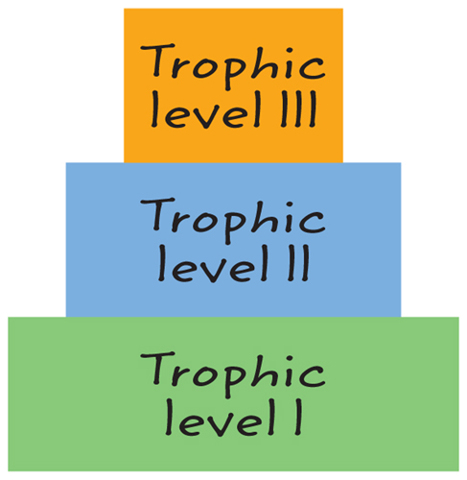

5. Which organism might you expect to find at trophic level I?
A.fox
B.frog
C.grass
D.grasshopper
6. Which best represents the flow of energy through a food chain?
A.Sun → rabbit → fox → grass
B.Sun → grass → rabbit → fox
C.fox → grass → rabbit → Sun
D.grass → rabbit → fox → Sun
7. A person who ate a salad made of lettuce, tomatoes, cheese, and ham is a(n)
A.carnivore.
B.detritivore.
C.herbivore.
D.omnivore.
Interpret Graphics
8. Assess Which trophic level has the most energy available to flow through living things?
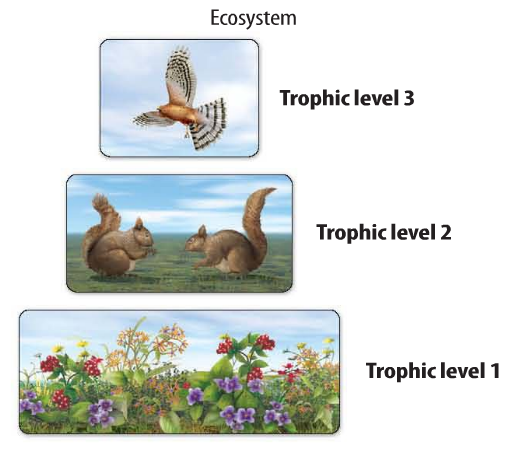

Critical Thinking
9. Recommend A friend wants to show how energy flows in ecosystems. Which model would you
recommend? Explain.
recommend? Explain.
10. Role-Play Working in a group, perform a skit about organisms living near a hydrothermal vent.
Be sure to include information about how the organisms obtain energy.
Be sure to include information about how the organisms obtain energy.
11. Assess the usefulness of models as tools for studying ecosystems.
12. Study the flow of energy through the food web below. Classify each organism according to what
it eats.
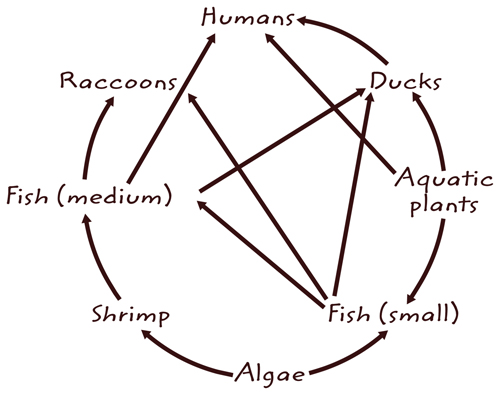
it eats.

13. Diagram Algae is floating in a pond ecosystem. Stoneflies and minnows eat the algae. Sunfish
and bats eat the stoneflies. Walleye eat the sunfish and minnows. Great blue heron eat the sunfish
and minnows. Diagram a food web showing the flow of energy through the living systems in this
ecosystem.
and bats eat the stoneflies. Walleye eat the sunfish and minnows. Great blue heron eat the sunfish
and minnows. Diagram a food web showing the flow of energy through the living systems in this
ecosystem.
Writing in Science
14. Write an argument for or against the following statement. The energy humans use in cars
originally came from the Sun.
originally came from the Sun.
Math Skills
Use Percentages
15. The plants in level 1 of an energy pyramid obtain 30,000 units of energy from the Sun. How
much energy is available to flow through the organisms in level 2? Level 3?
much energy is available to flow through the organisms in level 2? Level 3?
Use the information below to answer questions 16 and 17.
A group of plankton, algae, and other ocean plants absorb 150,000 units of energy.
16. How much energy is available to flow through the third trophic level?
17. How much energy would remain to flow through a fourth trophic level?
18. Some organisms, such as humans, are omnivores. They eat both producers and consumers. How
much more energy would an omnivore get from eating the same mass of food at the first trophic
level than at the second trophic level?
much more energy would an omnivore get from eating the same mass of food at the first trophic
level than at the second trophic level?
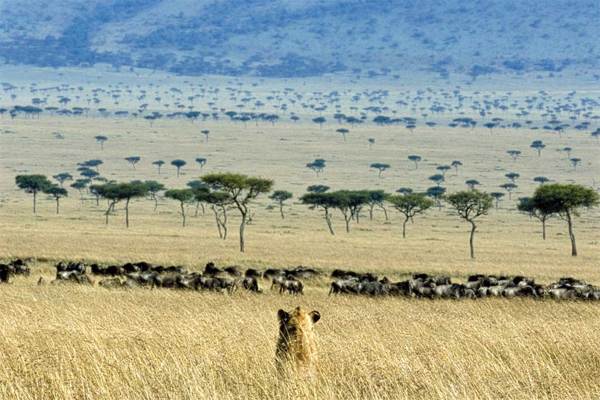
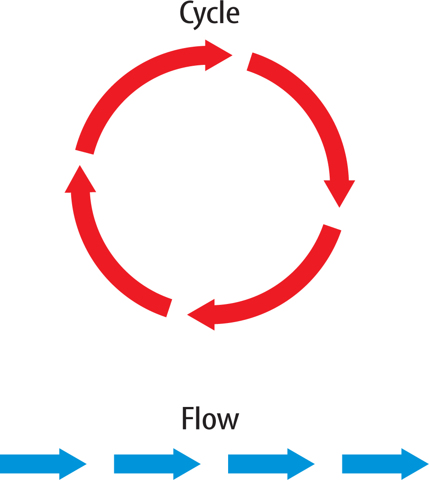
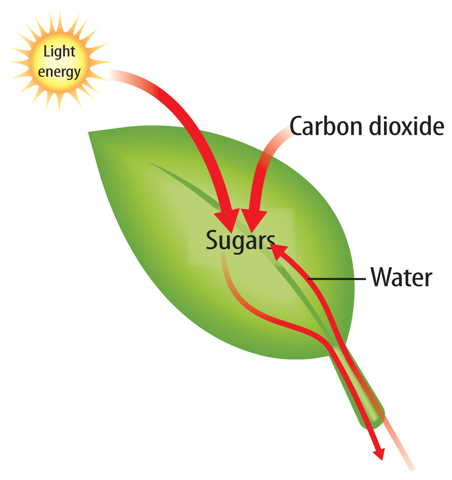
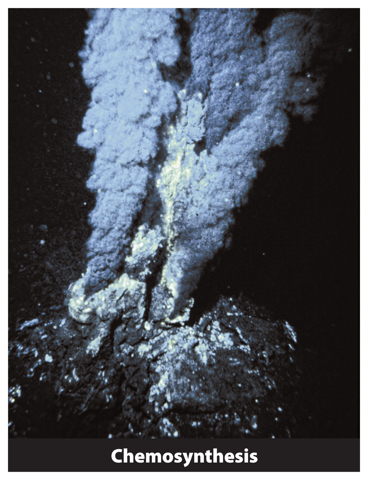
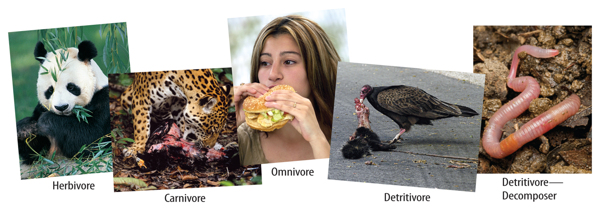


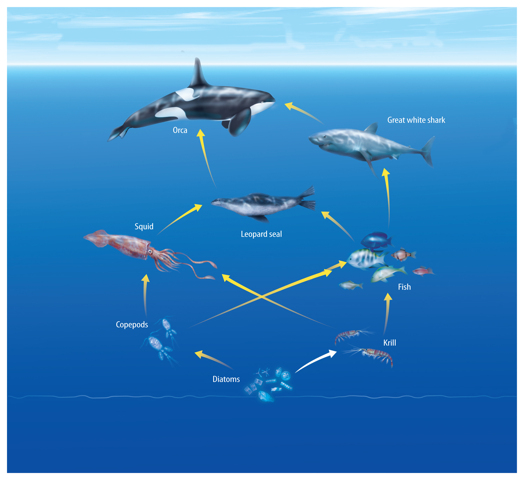
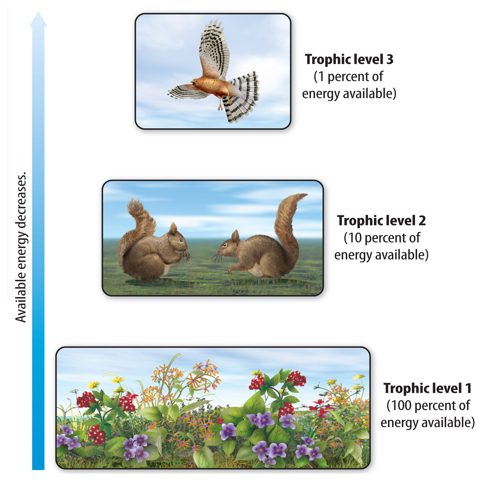
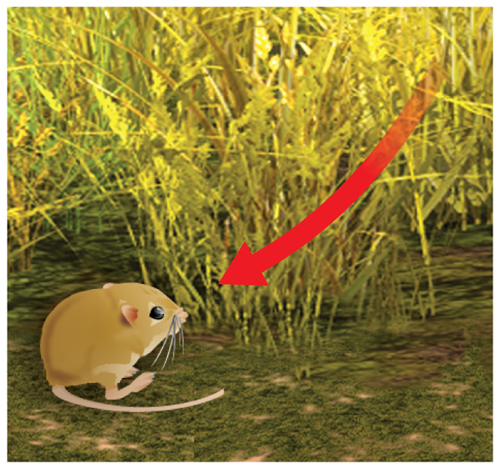
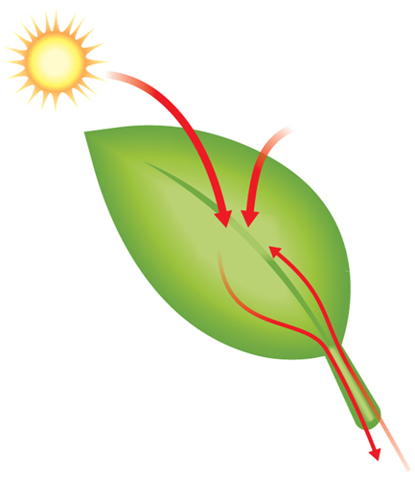
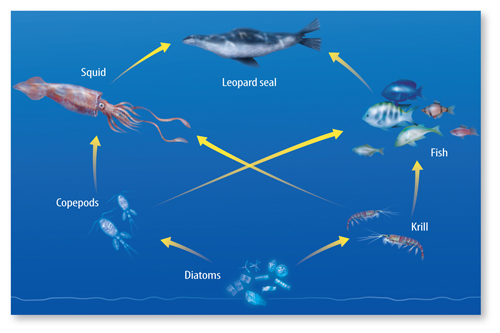
No comments:
Post a Comment